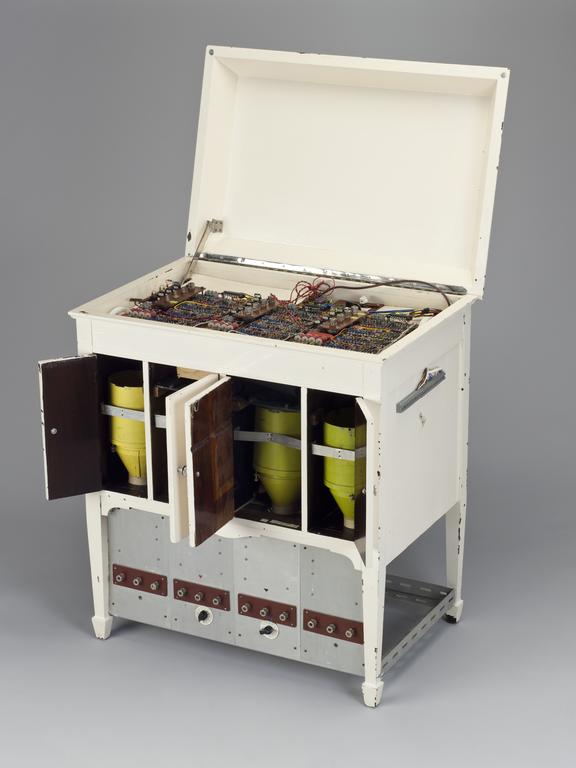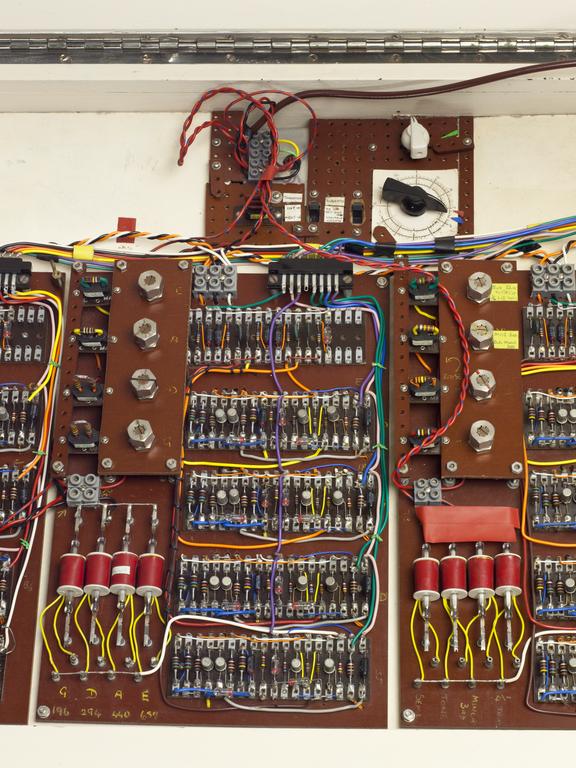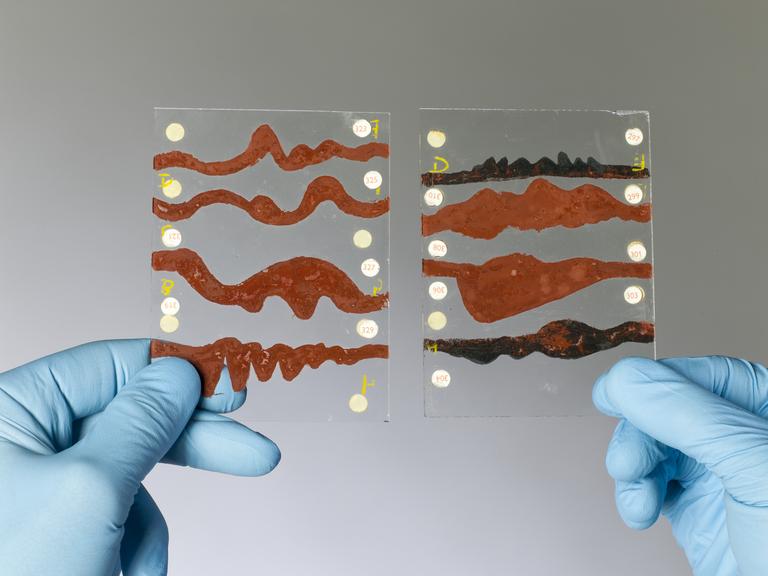Mital’s Daphne Oram Browser is an archival tool, an educational resource for archivists and scholars, and an instrument for exploring Daphne Oram’s vast and newly recovered collection of audio, lectures, and various notes. The browser was developed with the intention of learning more about the iconic musician/composer/inventor’s legacy by providing an alternative to file browsers that is more suited to examining audio information.
The browser, based on Mital’s previously developed auditory models, has the capability to reveal semantic similarities in audio content in a 3 dimensional format capable of both listening and performing the archive.
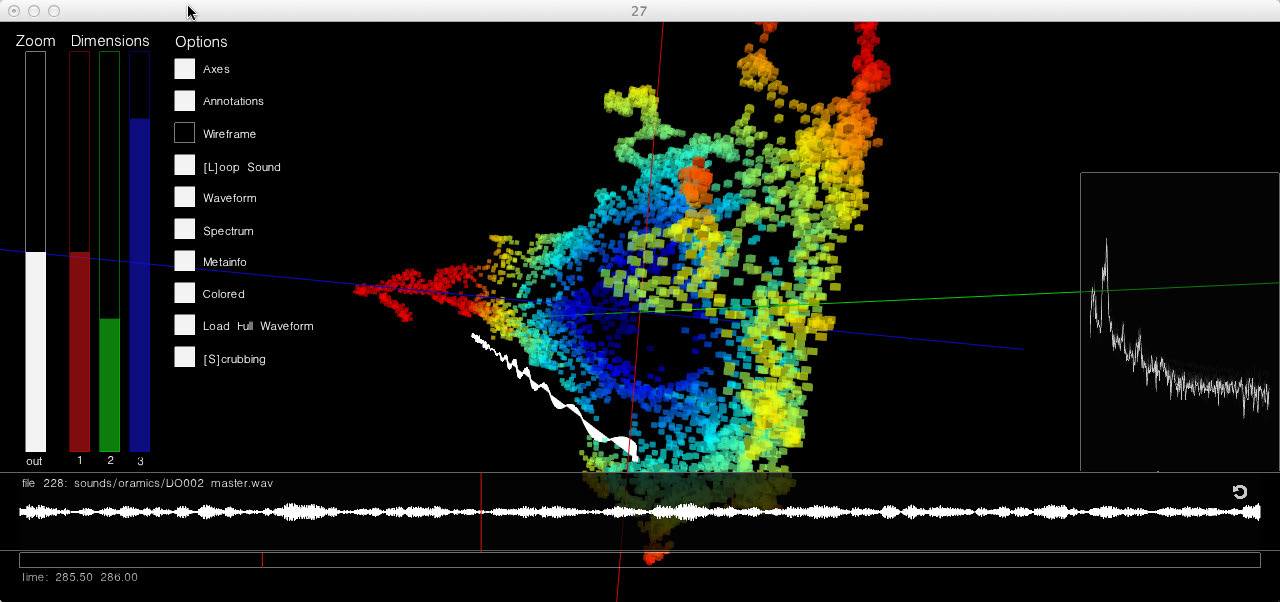
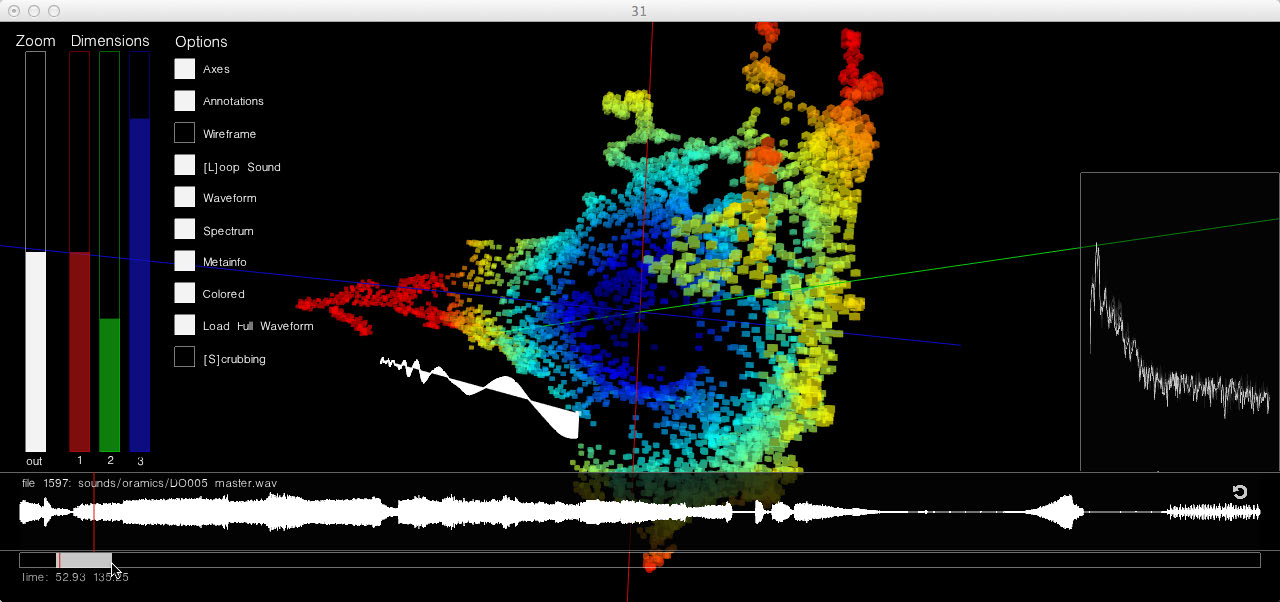
Daphne Oram’s archive, abandoned in a barn in France, was only rediscovered in the early 2000’s. Various researchers, along with Goldsmiths and the Science Museum of London, worked for many months to carefully restore the recovered materials that included nearly 60 hours of content as well as the original Oramics machine. These materials would become part of a 10 year exhibition at the Science Museum of London called ‘Oramics to Electronica’, which highlighted Daphne Oram’s Oramics Machine, and her role as the co-founder of BBC Radiophonic’s Workshop.
In addition to the exhibition of Oram’s archives, Mital was invited to create an iPhone and Desktop emulator, which brought the sound of Daphne Oram’s Oramics Machine to life through the Oramics drawn sound technique. Mital’s emulator created a digital representation of the machine that allowed viewers to perform their own drawn music.
About Oramics
Oramics is a technique for creating sound using visual music by using various film reels along with a wave shaper module which requires drawing on glass plates to synthesize music. The shapes on the film create a mask, which modulates light received by photocells to create unique sounds that can then be layered or patterned.

Daphne Oram’s Oramics Machine produced entirely surprising sounds way ahead of the time of later voltage and digital synthesizers that would not appear until the 70s and 80s. The workshop was also home to Delia Derbyshire who arranged the iconic Dr. Who title music. Not unlike the alien landscapes of those worlds, Oramics was capable of producing fascinating and wildly imaginative aural landscapes such as those heard in Birds of Parallax:
Additional Links
Oramics Machine | Science Museum Group Collection
‘Oramics to Electronica’ at the Science Museum, London – Daphne Oram
Mick Grierson Discusses the Collection of Daphne Oram
Collaborators:
Mick Grierson, The Daphne Oram Trust, AHRC, Goldsmiths College, Michael Young, Tim Boon, John Lely, Ian Stonehouse, James Bulley


